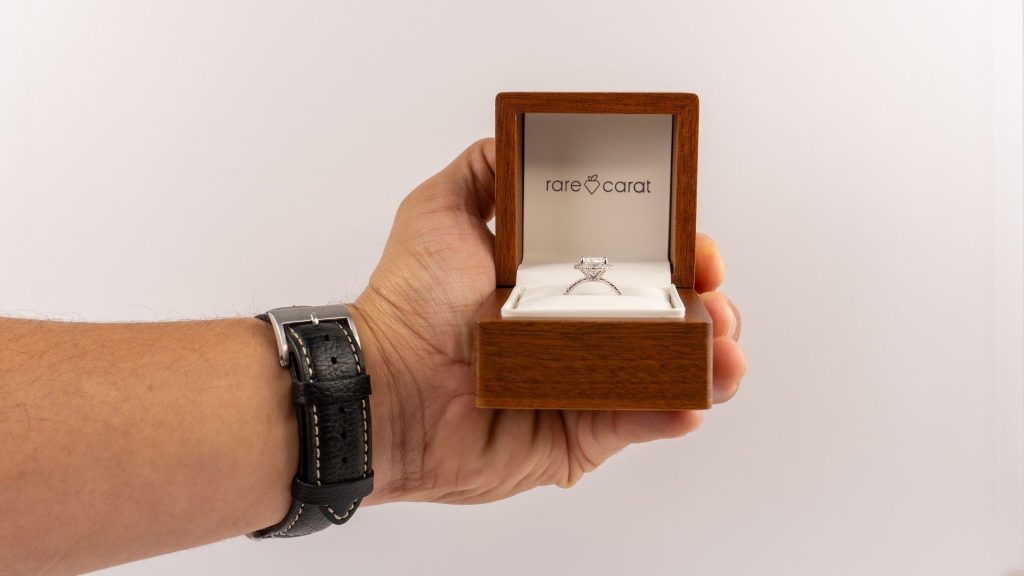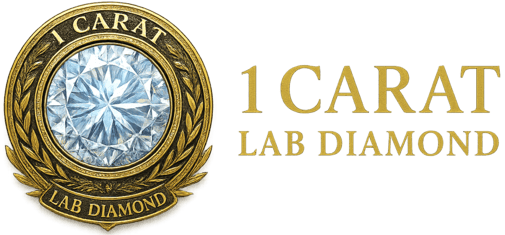The best proposal stories start with a ring that feels personal; timeless enough to age beautifully, modern enough to feel like you. In 2025, the conversation is shifting even more where couples want personalization, sustainability, and timeless engagement ring styles all at once.
Whether it’s the rise of lab-grown diamonds, the return of vintage-inspired bands, or the continued demand for oval engagement rings, these trends are shaping how proposals look and feel this year.
Rare Carat, aka the go-to diamond shopping brand in the U.S., has seen these changes firsthand, with over a million GIA and IGI-certified diamonds available for side-by-side comparison. From classic solitaire rings to bold toi et moi settings, here are the styles and trends defining 2025.
What are the most popular engagement ring styles this year?

The halo engagement ring continues to be a top pick, surrounding a center diamond with a sparkling frame that enhances its size and brilliance. Hidden halo designs are also growing in popularity, offering discreet sparkle that’s visible only from the side profile. Meanwhile, solitaire diamond rings remain timelessly simple, elegant, and perfect for highlighting the center stone’s quality. Couples browsing Rare Carat’s filters often compare these styles directly, weighing whether to maximize sparkle or lean into understated sophistication.
What are the top trends in engagement rings?
Two ideas define 2025: refinement and realism.
Bands are getting slimmer to make the center stone look larger without inflating carat; hidden halo designs add sparkle from an angle without changing the silhouette; and low‑profile settings that sit closer to the finger are winning for comfort.
Personal touches, such as subtle engraved messages, a surprise diamond on the bridge, or a matching curved band, turn simple designs into “truly yours.” Because Rare Carat lists certified natural & lab‑grown diamonds with detailed specs, it’s easy to test these choices live: narrow to a favorite shape, keep cut quality non‑negotiable, then view your diamond in multiple settings until the proportions feel just right.
Which diamond shapes are most in demand for new proposals?
Round diamonds remain the benchmark for maximum brilliance, but ovals keep climbing thanks to their elongated face‑up size and flattering finger coverage. Emerald and radiant shapes offer crisp geometry; emerald for that “hall‑of‑mirrors” look, radiant for a brilliant cut with square‑ish lines. Pear has returned for its romantic teardrop profile; cushion stays popular among vintage‑leaning buyers. Trend‑curious shoppers explore marquise for a fashion‑forward silhouette, while princess still appeals to modern minimalists. Rare Carat’s shape filters and 360° views make these differences obvious, and the Diamond Price & Quality Report helps compare similar stones so the final pick is as smart as it is pretty.
What metals and finishes are trending in engagement rings?
Yellow gold continues its renaissance, especially in 18K for a rich hue; platinum leads for durability and a cool‑toned, luxe feel; rose gold stays a favorite for warm skin tones and vintage‑inspired settings.

Finishes are more considered: high‑polish for classic shine, brushed/satin for understated texture, and hammered or handcrafted details for subtle uniqueness. Because metal color influences perceived diamond color, many buyers use Rare Carat’s side‑by‑side previews to balance metal choice with a near‑colorless grade (for example, H–I can look beautifully warm in yellow or rose gold).
Are hidden halo and toi et moi designs still gaining popularity?
Yes—both, for different reasons. Hidden halo settings tuck small diamonds beneath the center stone, adding a glow that’s visible in motion while keeping the top view clean. It’s a clever way to increase presence without changing carat. Toi et moi designs (two stones meeting in one ring) keep trending because they’re inherently personal: a paired shape story (say, emerald + pear) or a mix of lab‑grown and natural to balance value and sentiment. Rare Carat’s custom builder makes this experimentation practical: compare shapes, heights, and band widths, then have a gemologist weigh in on proportions before you order.
What are the best‑selling minimalist engagement ring styles?
The most‑saved “quiet luxury” looks are simple solitaire settings with a thin or tapered band, bezel solitaires that frame the stone in a whisper of metal, and petite pavé bands that add sparkle without bulk. Low‑set baskets and flush‑fit profiles that stack cleanly with a wedding band are in demand for everyday wear. Minimally styled rings depend on top‑tier cut to carry the design; Rare Carat’s Diamond Price & Quality Report flags proportion issues early, so buyers keep the carat they want without sacrificing light performance.
How are lab‑grown diamonds influencing 2025 style trends?
Lab‑grown diamonds are shaping style in two ways: size and freedom. Lower price‑per‑carat lets buyers move into the “ideal look” they’ve pinned. Be it bigger center stones, halo accents, three‑stone symmetry, or toi et moi pairings — all these (and more) can be attained while staying on budget.
At the same time, lab‑grown’s consistent availability makes it easier to match side stones and achieve cleaner symmetry in custom builds. Because Rare Carat supports both lab‑grown and natural with identical GIA/IGI certification standards, shoppers can weigh value against tradition transparently, then confirm choices with free gemologist consultations before checkout.
Putting it all together (and getting it right on the first try!)
Define the feeling first (timeless solitaire, sculptural bezel, or a refined halo), and then let the numbers serve the vision. Keep cut at the top of your list, choose a color and clarity that look clean to your eye in your chosen metal, and use slim bands or hidden halos for extra presence if you’re staying under a carat target.

Rare Carat streamlines that process: filter by shape, carat, and budget; review each Diamond’s Price & Quality Report for cut and proportion sanity checks; explore the setting in 360°; and, if two stones look similar on paper, ask a gemologist to weigh in. The result is a ring that sits perfectly at the intersection of trend and timeless, chosen with both heart and evidence.
